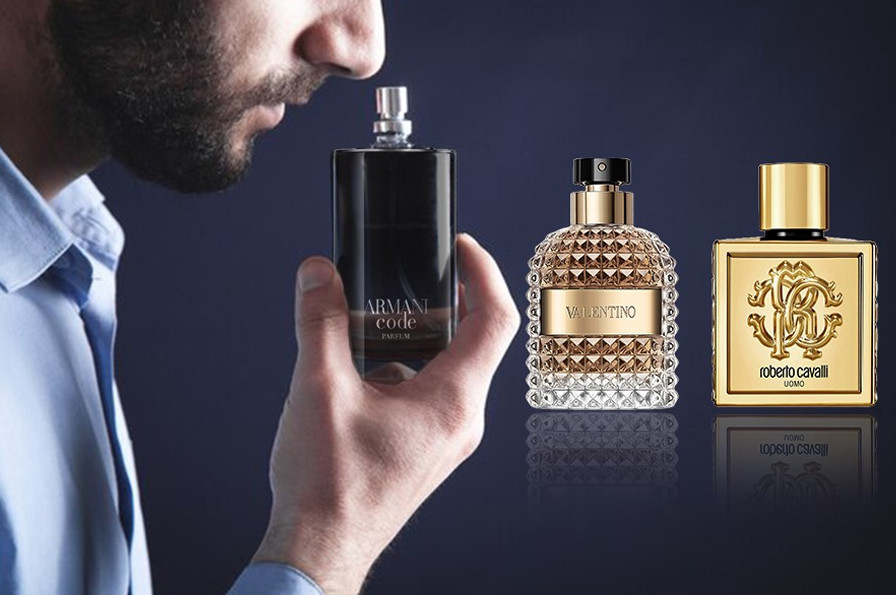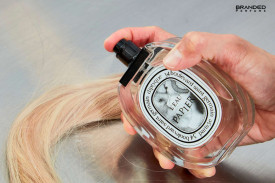Step into the fascinating world of perfumery and uncover the secrets behind creating the perfect fragrance. From the distinctive scent of a blooming flower to the alluring blend of essential oils, perfumery is an art form that captivates our senses and evokes powerful emotions. In this article, we delve into the intricate process of crafting a fragrance that is both enchanting and unique.
With a keen understanding of the brand voice, our expert perfumers have perfected the art of storytelling through scent, creating olfactory masterpieces that resonate deeply with individuals. Drawing inspiration from nature, memories, and cultural nuances, each fragrance tells a captivating story, making it a personal and intimate experience for every wearer.
We explore the meticulously selected ingredients, the harmonious blending techniques, and the scientific precision behind creating a fragrance that lingers in the memory. Delve into the world of top, middle, and base notes, and discover how each layer contributes to the overall composition, leaving a lingering trail of enchantment.
Whether you are a connoisseur or simply curious about the world of perfumery, this article will guide you through the enchanting process of creating the perfect fragrance. Get ready to immerse yourself in the sensory journey of perfumery and unlock the secrets behind the scents we love.
The history of perfumery
Perfumery has a rich and storied history that dates back thousands of years. Ancient civilizations such as the Egyptians, Persians, and Greeks were known for their love of fragrances, using them for religious ceremonies, personal adornment, and even as a form of currency. The art of perfumery spread across the world, with each culture adding its unique touch to the craft.
In the 14th century, perfumers in Europe began to experiment with distillation techniques, allowing them to extract essential oils from flowers, herbs, and spices. This marked a turning point in the world of perfumery, as it enabled the creation of more complex and sophisticated fragrances. Perfumes became a symbol of luxury and status, worn by royalty and the elite.
The science behind creating fragrances
While perfumery is undoubtedly an art, it is also deeply rooted in science. The creation of a fragrance involves a deep understanding of chemistry and the interaction of different molecules. Perfumers carefully select and combine various ingredients, such as essential oils, aroma chemicals, and fixatives, to create a well-balanced and long-lasting scent.
One of the key aspects of fragrance creation is the classification of scents into different notes. Fragrances are typically composed of three layers: top notes, middle notes, and base notes. The top notes are the initial scents that are immediately noticeable when the fragrance is applied. They are usually light and refreshing, often derived from citrus fruits or aromatic herbs.
The middle notes, also known as heart notes, emerge after the top notes have evaporated. These scents are often floral or fruity, adding depth and complexity to the fragrance. Finally, the base notes are the foundation of the fragrance, providing a long-lasting scent that lingers on the skin. They are typically derived from woods, musks, or resins.
The different fragrance notes and their characteristics
Creating a fragrance is a meticulous and multi-step process that requires creativity, expertise, and attention to detail. It starts with the conceptualization of the fragrance, where the perfumer defines the desired olfactory experience and identifies the target audience. The perfumer then begins to select and combine ingredients, carefully considering their individual characteristics and how they will interact with each other.
Once the initial formula is created, the perfumer conducts multiple iterations and adjustments to achieve the desired scent. This involves testing the fragrance on different skin types and in various conditions to ensure its stability and longevity. The process may take months or even years, as perfumers strive for perfection and balance in their creations.
After the final formula is approved, the fragrance goes into production. It is manufactured in controlled environments to maintain consistency and quality. The perfume is then bottled, packaged, and prepared for distribution to retailers and customers worldwide.
The process of creating a fragrance - from concept to final product
Fragrances can be categorized into various families, each with its distinct characteristics and olfactory profiles. Some popular fragrance families include floral, oriental, woody, citrus, and fresh. Floral fragrances are dominated by the scents of flowers and are often associated with femininity and elegance. Oriental fragrances are rich, warm, and exotic, featuring ingredients like spices, incense, and amber.
Woody fragrances are characterized by the scents of woods, such as sandalwood, cedarwood, and patchouli. They are often earthy and evoke a sense of grounding and sophistication. Citrus fragrances are refreshing and invigorating, with notes of citrus fruits like lemon, orange, and grapefruit. Fresh fragrances are light, clean, and reminiscent of the outdoors, often featuring aquatic or green notes.
Popular fragrance families and their characteristics
Creating your own signature fragrance can be a rewarding and personal experience. Here are some tips to help you on your fragrance journey:
1. Start by experimenting with different essential oils and aroma chemicals. Take note of the scents that resonate with you and blend well together.
2. Consider the season and occasion for which you are creating the fragrance. Light and floral scents are perfect for spring and summer, while warmer and spicier scents are ideal for fall and winter.
3. Experiment with different combinations and ratios of ingredients. Keep in mind that less is often more when it comes to fragrance creation. A well-balanced and harmonious scent is key.
4. Allow the fragrance to mature and evolve over time. Some scents may change and develop as they age, so be patient and revisit your creation after a few days or weeks.
5. Don't be afraid to seek feedback from others. Ask friends or family members to test your fragrance and provide their honest opinions. Their perspectives can help you refine and improve your creation.
Tips for creating your own signature fragrance
Marketing and branding play a crucial role in the success of a fragrance. Perfume brands invest heavily in creating captivating narratives and visual aesthetics that resonate with their target audience. From the packaging design to the advertising campaigns, every aspect of the brand experience is carefully curated to create a sense of desire and aspiration.
In recent years, social media has become a powerful platform for perfume marketing. Influencers and beauty bloggers share their thoughts and recommendations, shaping the perception of different fragrances. Perfume brands also leverage storytelling and emotions to create a connection with consumers, evoking nostalgia, romance, or adventure through their fragrances.
The role of marketing and branding in the perfume industry
As consumers become more conscious of their impact on the environment and their personal health, there is a growing demand for eco-friendly and sustainable fragrances. Some perfume ingredients, such as synthetic musks and certain phthalates, have been linked to environmental and health concerns. To address these issues, many perfumers are turning to natural and organic ingredients.
Eco-friendly alternatives include using plant-based essential oils, natural extracts, and sustainable sourcing practices. Perfume brands are also exploring innovative packaging solutions, such as refillable bottles and recyclable materials, to reduce waste and promote sustainability. By choosing eco-friendly fragrances, consumers can enjoy their favorite scents while minimizing their carbon footprint.
Perfume ingredients to avoid and eco-friendly alternatives
The art of perfumery continues to evolve in a changing world. Perfumers are constantly pushing boundaries and experimenting with new ingredients and techniques to create innovative and captivating fragrances. As consumers, we have the power to support sustainable and ethical perfume brands, making conscious choices that align with our values.
So, next time you spritz on your favorite fragrance, take a moment to appreciate the artistry and craftsmanship that went into its creation. From the history and science behind perfumery to the personal journey of finding your signature scent, the world of fragrance is a sensory experience that continues to inspire and enchant us. Discover the secrets behind the perfect fragrance and embark on your own olfactory adventure. The world of perfumery awaits, ready to captivate your senses and evoke powerful emotions.









